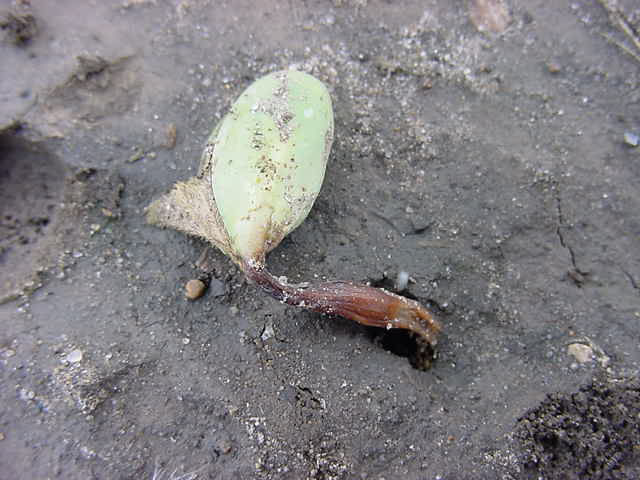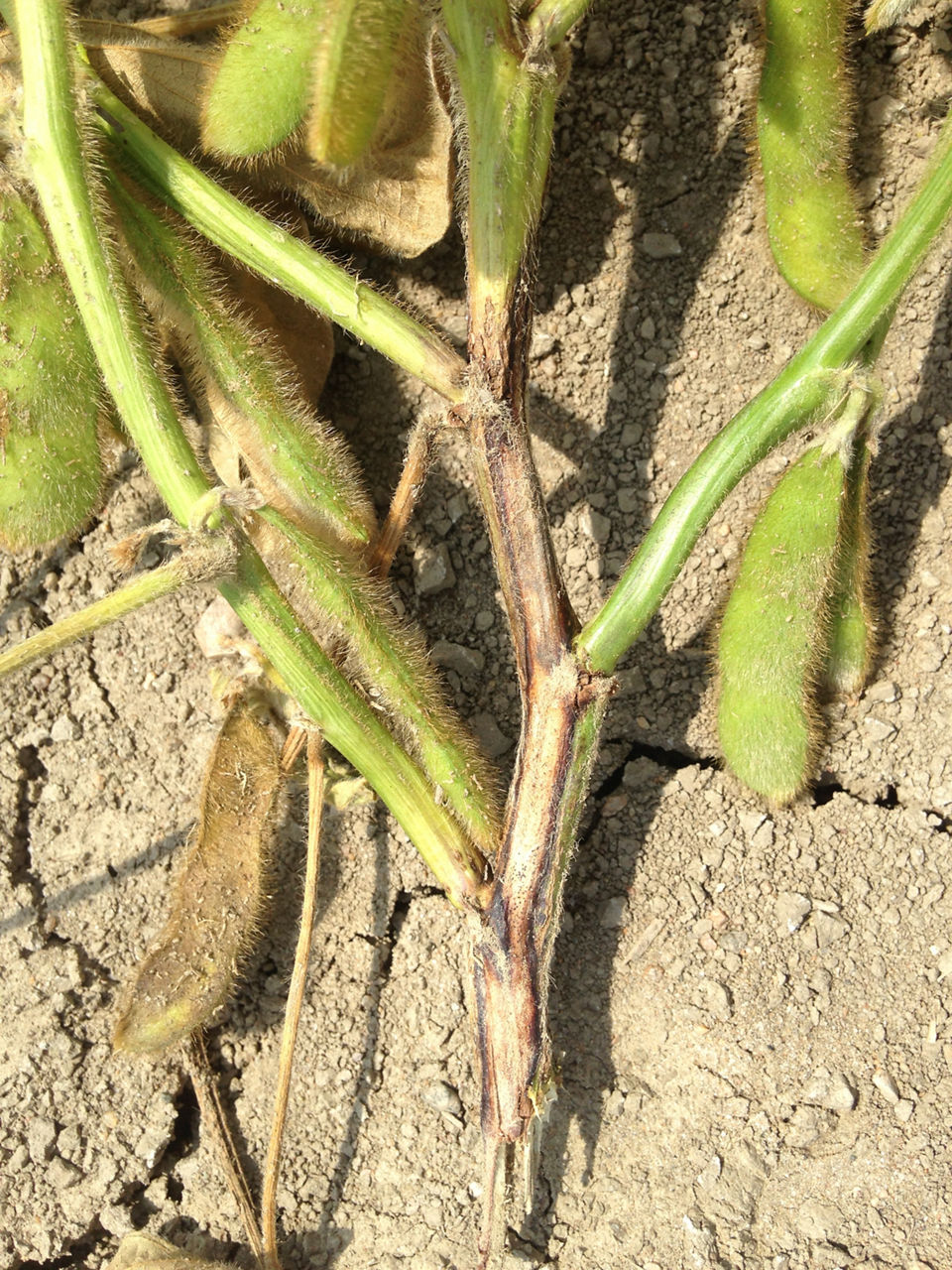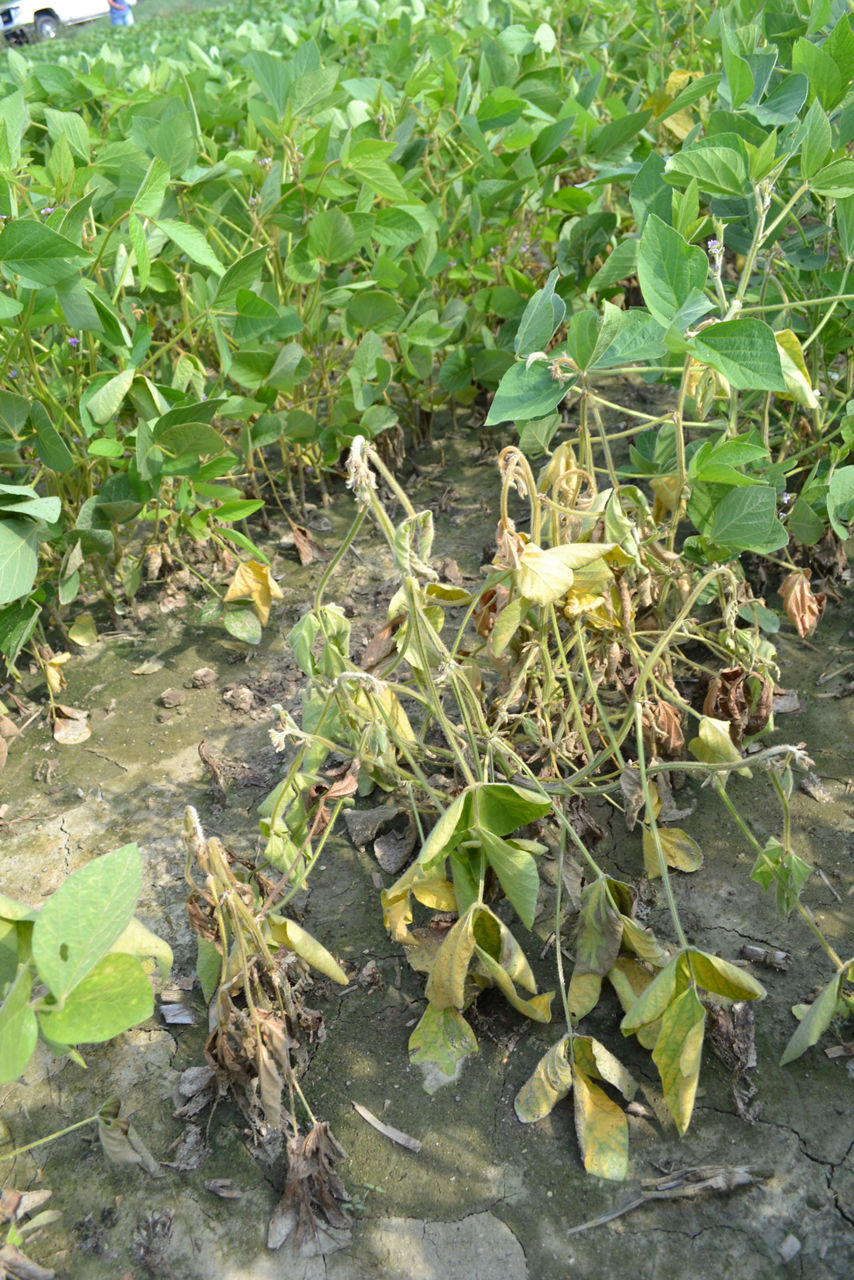Phytophthora Root and Stem Rot of Soybean
September 25, 2023
Risk factors for Phytophthora are:
- Fields with a history of Phytophthora or a history of stand establishment problems.
- Years in soybean production – disease risk increases with more years in soybean production.
- Soil-saturating rains following planting; disease development is most rapid at soil temperatures above 60 °F (*15.5 °C) when soils are saturated.
- Poorly drained fields.
- When a susceptible soybean product is planted.
Phytophthora root and stem rot, caused by Phytophthora sojae, is one of the most damaging diseases in the northern soybean production areas and it is a major cause of stand establishment problems. Seeds and seedlings can be infected and killed at any time after the seed has absorbed moisture. The pathogen can also infect plants later in the season following periods of heavy rain, resulting in stem and root rot.
The pathogen belongs to a group of fungus-like organisms called Oomycetes or water molds. This group of pathogens causes other plant diseases such as Pythium seedling blight, Aphanomyces root rot of peas and alfalfa, downy mildews, and late blight in potatoes. Phytophthora root and stem rot develops quickly under warm temperatures in saturated soil. As such, warm soil conditions in conjunction with rainy weather create an ideal environment for disease development. Optimum conditions for infection are saturated soils at temperatures greater than 60 °F (15.5 °C).
While Phytophthora diseases are most common in areas with poor drainage, outbreaks can occur in well-drained soils that become saturated for at least a week. The organism produces reproductive structures called oospores that can survive many years in the soil, and which germinate when soil becomes wet. Upon germination, the oospores produce sporangia, which are short-lived reproductive structures. Sporangia release zoospores, the infectious stage, in saturated soil. Soybean seeds and roots produce a chemical that attracts the zoospores.
Scouting and Management
Start scouting by examining low, wet spots in the field; fields with high clay content leading to poor drainage; long-term no-till fields; or weedy areas that could indicate loss of stand due to earlier infection.
- Damping-off phase
If soils become saturated following planting, begin scouting at plant emergence. Three scenarios may occur if Phytophthora infection occurs: gaps appearing in the row due to plants germinating but failing to reach the surface, or plants emerging but dying after emergence. If gaps are found, search for the seed, which may have rotted prior to germination. If a remnant of the plant is found, examine the stem at the soil level, looking for a pinched appearance (Figure 1).

Keep in mind, it is difficult to distinguish Phytophthora root rot from Pythium root rot at this stage. Both diseases cause damping-off and rotting of the young root system. Generally, Pythium species are more active in cold soils and Phytophthora sojae is more active in warm soils. Recent research, however, has shown that some Pythium species from the southern area of the soybean growing region are adapted to causing disease in warmer soils.
- Stem and root rot phase
If damping-off has occurred in the field, expect Phytophthora stem and root rot to occur following rainy periods later in the season. The stem rot phase can be diagnosed by a distinct chocolate-brown lesion moving up the stem from the soil line (Figure 2).

Initially, the upper stem of the plant may remain green, but eventually the plant will wilt, turn yellow, and die with leaves remaining attached. This may be confused with soybean stem canker. However, Phytophthora infection results in slightly sunken, dark cankers at the nodes. The stem tends to remain green between the nodes, but the cankers may completely girdle the stem causing death above the cankers (Figure 3). Additionally, plants infected with stem canker will have healthy roots, while plants infected with Phytophthora sojae will not.

Plants infected with the root rot phase of Phytophthora root and stem rot can be difficult to identify, as inspection of the roots is necessary to confirm infection. Initially, the plants will be stunted and less vigorous than healthy plants, which are symptoms that can be caused by other plant problems as well. The root system will have a significant reduction in the number of secondary roots and fine root hairs. Additionally, plants with the root rot phase may mature a week or two earlier than healthy plants in the field.
Management Options
- Plant resistant varieties
Variety selection is the key for managing Phytophthora root and stem rot. There are two different types of genetic resistance available in soybean varieties: single-gene resistance and partial resistance. Single-gene resistance is a complete resistance to a specific pathotype (formerly known as race) of P. sojae, which blocks the pathogen’s ability to infect the host. The most common group of single-gene resistance genes are known as Rps genes. (Rps being short for “Resistant to Phytophthora sojae.”) The most commonly used Rps genes include Rps1a, Rps1c, Rps1k, Rps3a, and Rps6, or a combination thereof. Information on a variety’s resistance profile is usually available from your seed dealer and from the variety description.
Varieties with the same resistance genes may perform differently because of different levels of partial resistance (also called quantitative, horizontal, or field resistance) to all pathotypes of Phytophthora sojae. Soybean varieties with high levels of partial resistance may become infected with P. sojae, but symptoms are less severe than those in a variety that is highly susceptible. Partial resistance will not be effective until the seedling is established.
In fields with known Phytophthora problems or conditions that would favor disease development, the current recommendation is to always choose a cultivar with the best levels of partial resistance available in the desired maturity group. Partial resistance will not prevent infection by Phytophthora sojae, but it may delay disease onset. Select a variety based on which specific resistance genes are known to be effective in your region.
- Use seed treatments
Partial resistance to P. sojae is not effective until the seedling is established. Fungicide seed treatments can provide some early protection to seeds and germinating seedlings. It is best to use a class of fungicide specific for water molds, such as products that contain metalaxyl, mefenoxam, ethaboxam, or oxathiapiprolin.
- Improve soil aeration, drainage, and structure
- Rotate crop
Sources
Jardine, D. 2020. Phytophthora root and stem rot. The Soybean Research and Information Network. https://soybeanresearchinfo.com/soybean-disease/phytophthora-root-stem-rot/
Malvick, D. 2018. Phytophthora root and stem rot on soybean. University of Minnesota Extension. https://extension.umn.edu/soybean-pest-management/phytophthora-root-and-stem-rot-soybean
1311_129667